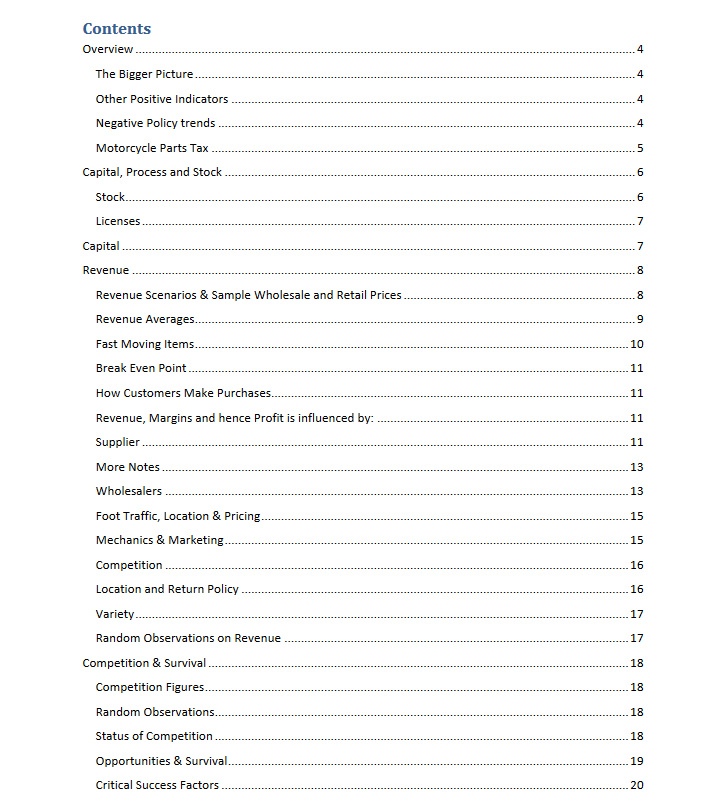Motorcycle Spare Parts Retail Business Plan
Motorcycle Spare Parts Retail Business Plan


Motorcycle Spare Parts Retail Business Plan Overview
This Motorcycle Spare Parts Retail Business Plan focuses on the retail of motorcycle spare parts those in the bodaboda business. It contains some few notes on the wholesale aspect of the business. Growth, decline or policies affecting the bodaboda sector will affect the business in one way or another.
The Bigger Picture
As of December 2013 there was an estimated 800,000 registered motorcycles. In 2005 there were 3,759. Then in 2008 the government zero rated motorcycles below 250cc in 2008 and in 2009 the number jumped to 91,151 motorcycles.
Between January and September 2013 there were 109,153 new motorcycle registrations. This was about 35,000 more than the number registered over a similar period in 2012.
The trend is expected to continue in 2014. Though in some locations the bodaboda trade is considered saturated, the number of people getting into the business will continue to increase, given that it’s fairly simple to start.
Second hand motor cycles go for as little as Kshs.30,000 while new models start from as low as Kshs.60,000 There are also traders, politicians, banks and microfinance institutions availing finance to youth groups for purchase of motorcycles.
A large percentage of riders also don’t bother looking for driving licenses.
Other Positive Indicators About Motorcycle Spare Parts Retail Business
Honda Motor Company has set up a local assembly line with a capacity of 25,000 units per year, and which started operating in December 2013.
Car and General which had been importing and distributing TVS motorcycles from India, and Suzuki parts from Japan set up an assembly factory in Nakuru with a capacity of 70,000 units.
In December 2013 Toyota Kenya introduced a scheme called Crux Finance which enables more motorcycle riders to own motorcycles by pooling in resources. Toyota through its Yamaha division provides the motorcycles which are then paid for through a daily remittance of Kshs.300.
For parts like tires, mirrors, rims and even shock absorbers bodaboda riders are able to see or feel when they need replacement. In such a case they purchase the items then take to the mechanics to fit. Some riders have developed basic maintenance skills and are able to fix parts like tires or mirrors.
For more technical breakdowns riders take the motorcycles to mechanics for diagnosis. If the mechanic tells a rider to buy this or that part a big percentage of riders will prefer to go purchase the part themselves then give the mechanic to fix. Sometimes if unsure a rider will ask a mechanic to accompany him to a parts shop.
There exists suspicion among riders that if mechanics purchases parts on their behalf they will hike the price, or go for lower quality items. On the other hand some riders trust the mechanic to identify fake and genuine products and get the right part at the right price.
Some mechanics will recommend particular retailers based on their relationship, prices and quality. Therefore it’s a plus to develop good working relationships with mechanics.
Download Motorcycle Spare Parts Retail Business Plan / guide here